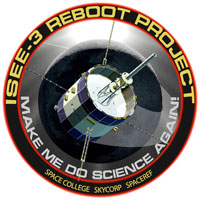
The Defense Advanced Research Projects Agency (DARPA) has issued an open call to the robotics industry soliciting expert proposals to create more power-efficient robots.
The agency aims to maximize robotic technology potential and improve the power efficiency of current robots by 2,000 percent. Robots are highly important tools in defense missions such as heavy transportation across rocky terrain or disabling roadside bombs, the agency said. However, with current technology, such robots are only able to work for about 10 to 20 minutes, significantly limiting their usability.
Improvements to robotics technology can help the machines store and utilize more energy, said Ronald Arkin, professor in the School of Interactive Computing at the Georgia Institute of Technology. The problem of storing energy is a challenge that plagues most mechanical system, he told TechNewsWorld.
“Powerful robots require large amounts of energy, so better materials and mechatronic design can make what is available to them last longer,” he said.
To address that challenge, the agency issued an open call to experts in the robotics industry, soliciting proposals in all areas of robot design, control and production. The agency hopes to gain insight into both the scientific and engineering sides of manufacturing a more efficient machine.
Going Mobile
The solicitation is part of a wider DARPA effort known as the “Maximum Mobility and Manipulation” (M3) initiative, which is designed to significantly improve robot capability by the 2014 annual DARPA Robotics Challenge (DRC).
The proposals will be divided into two tracks. In one, DARPA asks that experts build a platform for robots that will make the machine usable 20 times longer than the current typical 10 to 20 minute threshold. Experts will be asked to build a robot that runs on the new actuation technology and will be demonstrated at the DRC.
The second track is meant for more experimental platforms and doesn’t require technical readiness for a practical application.
DARPA’s call for help is relatively standard in the industry, said Rich Hooper, a robotics engineer.
“It’s pretty typical that they would ask this,” he told TechNewsWorld.
Making the Robot Human
DARPA is primarily concerned with developing actuation technologies, which deal with the way robots move. The agency wants to build robots that can mimic the fluid and practical movements that humans and animals produce with the movement of their bones, muscles and tendons working together with as little energy as possible.
The agency said that in addition to robotic design becoming more efficient for defense capabilities, the improved capacity could benefit other areas, such as prosthetic limb development.
Powering Robots for the Future
Improved efficiency could have a significant impact on the industry as a whole, said Hooper, especially since current defense robotics relies heavily on battery power, which comes with severe limitations.
“The reason they care so much about building energy-efficient robots is because they have to run all their machines on batteries,” he said.
Empowering more efficient robots could also help the industry move in the direction of greener or more sustainable machines, said Arkin.
“Robots could remain on duty for longer time periods between changes,” he said. “Not to mention the overall reduction in wasted energy for environmental considerations.”
However, practical limitations such as a lack of funding often stand in the way of progress. With the push from DARPA and an emphasis on specific improvements to robot design, though, Arkin said the initiative has the potential to make waves in the industry.
“Funding of course is essential to look for more effective solutions, and if invested wisely, which DARPA tends to do, it could reap significant benefits,” said Arkin.






















































Good idea, robots need to conserve energy. But in the meantime, until they become more energy efficient, just change the design so they can be automatically "recharged" through the use of battery exchange stations. The robot can come to the station when power is getting low, automatically dock, exchange batteries, and take off again. The exchange station could be mobile field deployed.